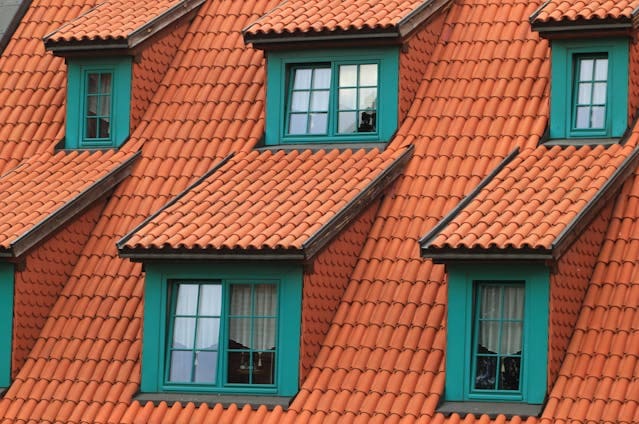When it comes to investing in quality roofing, there’s more to consider than just aesthetics. A well-installed and durable roof not only enhances your home’s curb appeal but also protects against the elements. Choosing the right roofing material and ensuring proper installation can save you money over time by reducing maintenance costs and extending the lifespan of your roof. Therefore, you want to consider several tips and tricks for choosing the right roofing material. This way, you can make informed decisions when investing in quality roofing.
1. Research Different Roofing Materials
The first step is to research different roofing materials available in the market. Some popular options include asphalt shingles, metal roofing, tile, and wood shakes. Each material has its own set of advantages and disadvantages in terms of durability, cost, and aesthetic appeal. One example is metal roof vs shingles for your home. Asphalt shingles are affordable and easy to install, but they may not last as long as metal roofing. However, metal roofing is known for its longevity and energy efficiency, making it a popular choice for many homeowners.
2. Consider Your Climate
Your local climate plays a significant role in determining the best roofing material for your home. For example, in areas with high temperatures and intense sunlight, a reflective roofing material like metal or tile may be more suitable as it can help reduce cooling costs by reflecting heat away from your home. In colder climates, asphalt shingles or wood shakes may provide better insulation and warmth. Additionally, areas prone to heavy rainfall or snow might benefit from materials with superior water resistance, like metal or slate. Understanding your climate and its impact on different roofing materials can help you make a more informed decision.
3. Hire a Reputable Roofing Contractor
Investing in quality roofing also means hiring a reputable and experienced roofing contractor. A skilled contractor will not only help you choose the right roofing material but also ensure proper installation. Before hiring a contractor, be sure to check their credentials, read reviews, and ask for references. Moreover, verifying their insurance coverage can protect you from potential liabilities during the project. It’s also a good idea to get multiple estimates to compare prices and services offered by different contractors.
4. Ensure Proper Ventilation
Proper ventilation is crucial for the longevity and performance of your roof. Poor ventilation can lead to moisture buildup, which can cause damage to your roof and insulation. Consider installing ridge vents, soffit vents, or attic fans to ensure proper ventilation. These ventilation systems help regulate temperature and moisture levels in your attic, reducing the risk of mold growth and roof damage. Furthermore, adequate ventilation can improve energy efficiency by reducing the strain on your HVAC system.
5. Invest in Quality Underlayment
While the roofing material is important, the underlayment also plays a critical role in protecting your home from leaks and moisture damage. Investing in a high-quality underlayment can provide an extra layer of protection against water infiltration and help extend the lifespan of your roof. Some popular options for underlayment include synthetic felt, rubberized asphalt, and ice and water shields. Be sure to consult with your roofing contractor to determine the best underlayment for your specific roofing material and climate. In addition, choosing a durable underlayment can enhance the overall performance and longevity, providing peace of mind for years to come.
6. Regular Maintenance and Inspections
Regular maintenance and inspections are key to ensuring the longevity and performance of your roof. Inspecting your roof at least twice a year can help identify potential issues such as loose shingles, cracked tiles, or damaged flashing before they escalate into costly repairs. Additionally, cleaning your gutters and removing debris from your roof can prevent water buildup and prolong the lifespan of the material. Performing minor repairs promptly can also prevent small issues from turning into major problems that require extensive repairs or even roof replacement. Moreover, trimming overhanging branches can avoid damage from falling limbs and reduce the risk of debris accumulating on your roof.
7. Consider Long-Term Costs
When investing in quality roofing, it’s important to consider the long-term costs associated with different roofing materials and maintenance. While some materials may have a higher upfront cost, they may require less maintenance and have a longer lifespan, making them a cost-effective option in the long run. Cheaper materials can save you money initially but may require frequent repairs or replacement. Energy-efficient roofing materials can also help reduce utility bills by providing better insulation and reducing heat absorption. It’s also worth considering the potential impact on your home’s resale value when choosing roofing materials, as high-quality and durable options can increase your home’s attractiveness to potential buyers.
Making Informed Choices for Quality Roofing
Investing in quality roofing is a significant decision that can have a lasting impact on safety, comfort, and value. By considering tasks such as researching different roofing materials, considering your local climate, and hiring a reputable contractor, you can make informed choices that will protect your investment and enhance the longevity of your roof. Regularly checking for signs of wear and tear can also help you address issues before they escalate into major problems. Furthermore, consulting with roofing professionals for advice and guidance can provide valuable insights into choosing the best roofing solutions for your specific needs and budget. Whether you opt for asphalt shingles, metal roofing, or another material, prioritizing quality and proper installation will ensure your roof stands the test of time.





